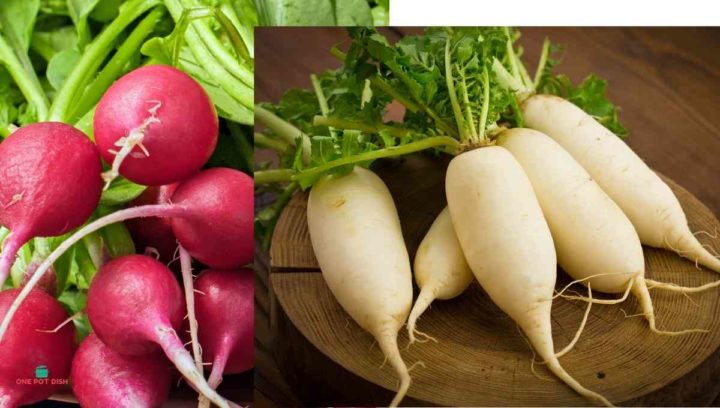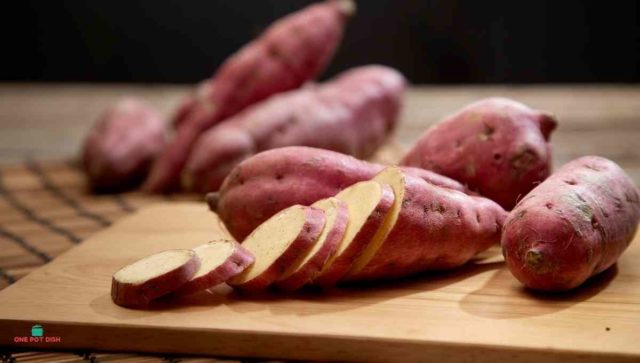I find parsnips one of the most underutilized root vegetables in the kitchen and every time I add it to a recipe, soup stew, or casserole it actually enhances the overall flavor of the dish bringing out any herbs and spices.
However, there are times when you want to have alternatives because parsnips I’m not always available in the supermarkets or even your local farmers’ market because they are not as popular as some of the other vegetables.
With a subtle earthy flavor and the perfect hint of sweetness, spiciness, and nuttiness, parsnips are packed with nutrition and come in varying colors from a white hue to creamy yellow colors. They’re great for adding to your diets or for simply experimenting with recipes in the kitchen.
Known for its versatility, this vegetable can be honey or garlic-roasted, boiled, steamed, baked, deep fried, mashed or even pureed. It can make a great side dish for your meat and poultry recipes. Prior to the extensive use of sugar, parsnip was first used as a sweetener for baked goods.
If you want to try something different or you don’t have any parsnips in your kitchen, you can substitute it with turnips, carrots, radish, sweet potatoes, parsley, celery root, and salsify.
Best Parsnip Substitutes
As a cook, it’s important that you are well-stocked with vegetables in your kitchen pantry and that you try to mix and match these ingredients in the meals you create. However, you can sometimes run out of a specific one (in this case it’s parsnips) and you don’t know how to replace them.
Luckily, this article will provide you enough knowledge on how to substitute parsnips and still achieve the flavor you were going for.
Read further to find out more:
Turnips
You can never have enough of this vitamin-rich substitute that’s considered a popular winter favorite for soup recipes. However, no matter what time of the year, you can always use turnips to enhance the flavors of any of your dishes.
Turnips vary in flavor depending on how cooked they are. When used raw, it has a spicy undertone that’s crispy and starchy in texture but when it’s cooked, it achieves a sweet and earthy flavor profile and becomes soft and tender to the touch. Sometimes, the flavor changes depending on their size too.
You can cook turnips in a lot of ways: roast, braise, puree, glazed, mash, steam, pickle, or turn into gratin. Just make sure you wash it thoroughly before cooking in cold water or vinegar and then peel them for the best results.

Carrots
Considered an extremely popular ingredient that can be cooked in a variety of ways in different cuisines, carrots are one of the most consumed vegetables in the world. You can boil, sautee, roast, bake, steam and grill them to velvety perfection.
Carrots slightly differ in taste depending on the color you’ve purchased:
- Orange carrots are sweet and earthy.
- Purple carrots are relatively sweeter with a subtle pepper undertone.
- Red carrots are similar to orange carrots in taste.
- White or yellow carrots are the sweetest variety but are generally mild-flavored.
To achieve optimal results, carrots should have a crisp texture when using them in your recipes. Avoid overcooking as the carrots may lose their health benefits. Make sure the carrots are cut evenly but you can also use them as a whole vegetable.
Radish
Since this substitute is another widely available ingredient, chances are you already have it in your kitchen. Radishes are particularly great when raw and they come in different shapes and sizes. The leaves of radishes are also considered edible and have a slight spinach-like taste.
A tip in choosing the most appropriate radish for your recipes is to find out what flavor profile you’re going for. Here’s some common radish varieties:
- Red radishes have a sharp taste that is slightly peppery.
- Daikon radishes are tangy, milder, and sweeter. – These are used as radishes in sushi.
- French breakfast radishes are earthy and slightly nutty in flavor.
You can cook radish in various ways: oven-roasted, pickled, butter-grilled, and sauteed. You can simply use them as is through slicing or dicing then added in salads, rice, sandwiches, and pasta.
Sweet Potatoes
This is certainly a crowd-favorite vegetable, even for those who don’t regularly eat veggies. Sweet potatoes have a starchy flavor that’s mildly sweet. The lighter variants have a relatively sweeter taste compared to the darker ones, so choose based on what you and your taste buds would agree on.
It’s generally recommended to mash, boil or bake it but you can definitely roast, steam or fry it when using as a substitute for parsnips. You can use sweet potatoes in salads, sandwiches, curries, soups, and burgers.
Make sure you go for sweet potatoes (not yams) that are long and symmetrical in shape for you to achieve an evenly-cooked batch of the vegetables. Poke holes into them and glaze using oil (vegetable or Canola would do) before cooking for the best results.

Parsley
Bearing the most similarity in terms of appearance and taste with parsnips, you can never go wrong with using parsley as a substitute. This healthy root vegetable has a mild bitter taste that actually enhances the flavors of your dishes.
Have fun with parsley by sprinkling them on top of nearly everything—pasta dishes, stews, vegetable mixes, salads, soups, grain dishes, you name it! You can even include it in your smoothies and as key ingredients in dips, dressings, and sauces.
Remember to finely chop parsley to the point that they look like herb flakes so that it’ll be easier for you to use it in cooking.
Celery Root
Despite its slightly different taste to parsnips, this root veggie, also known as celeriac, works great in a lot of recipes. It’s also in the same family as parsnips, making it a great substitute.
Celery root has a unique earthy taste that’s claimed to be a cross between a celery and parsley, with some nutty overtones. You can enjoy it raw or grated into salads, served with hummus, pureed into soups, roasted with other vegetables, or baked into chips.
Salsify
A Mediterranean vegetable known for its oyster-like taste, salsify adds a unique but subtle sweet taste to your recipes. They can be difficult to find but rest assured that your neighborhood vegetable boxes or local supermarkets will have them some time around October to January.
After cleaning and peeling the salsify, soak it in a bowl of cold water and lemon juice to prevent it from turning brown. You can boil or roast salsify, depending on your preferences. For added depth, you can season them with a little salt and pepper or smother them with butter.
Salsify is awesome on its own but you can also try pairing it white wine or add spices and herbs such as thyme and bay leaves to enhance more of its flavors.